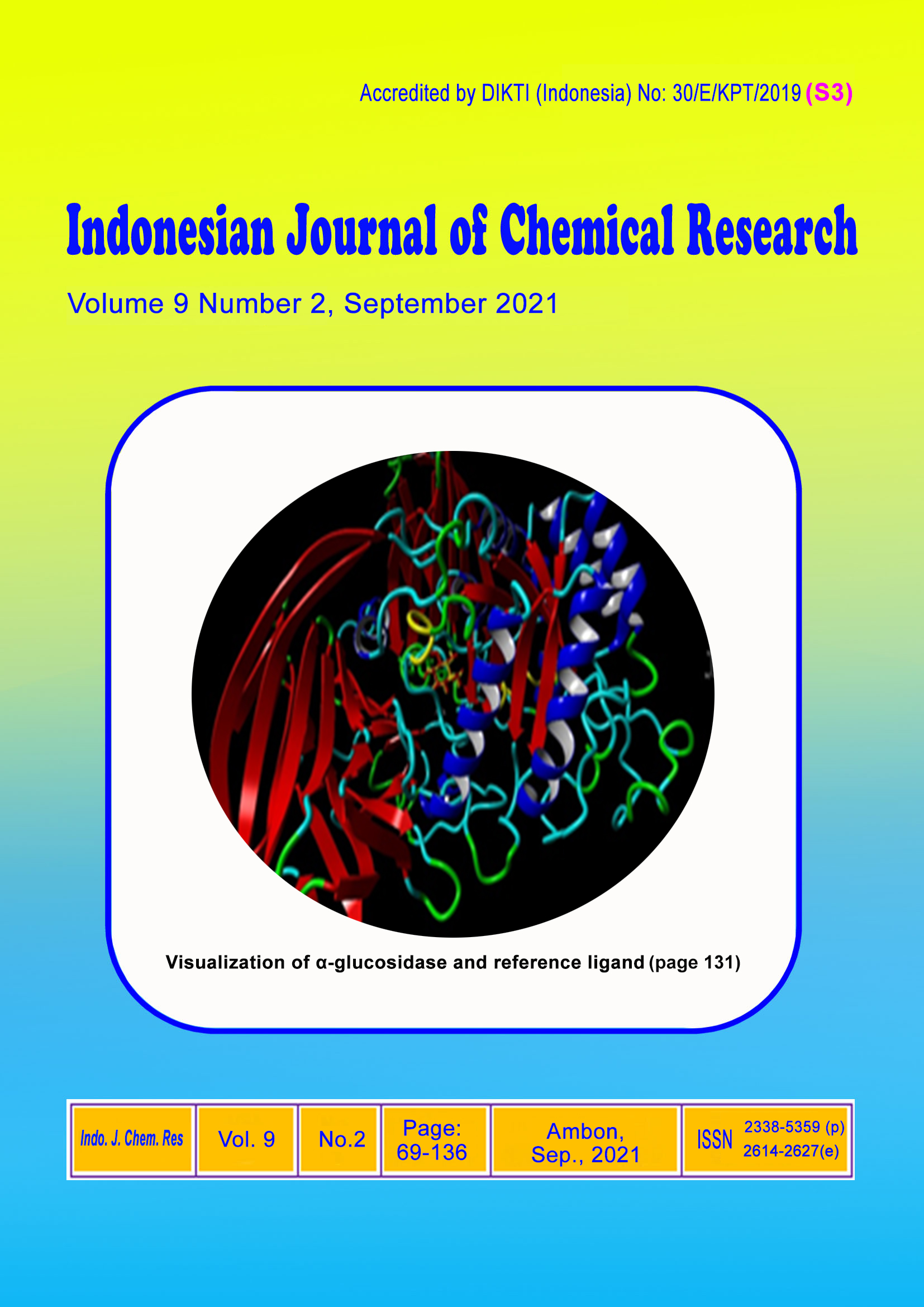Study of Molecular Docking of Alkaloid Derivative Compounds from Stem Karamunting (Rhodomyrtus tomentosa) Against α-glucosidase Enzymes
Abstract
Karamunting plant (Rhodomyrtus tomentosa) is a traditional medicinal plant. The leaves, roots, stems, and fruits of Karamunting have been identified, and their biological activities are antioxidants, antibacterial, antidiabetic, anti-inflammatory, and anticancer that contained alkaloids, tannins, and flavonoids. The types of alkaloids found in karamunting stems are homolycorine, ismine, lycorine, maritidine and tazetine. This study aims to determine the binding score of alkaloid-derived compounds with protein α-glucosidase and determine the protein's active site bound to the ligand. The method used in this research is Protein-Ligand ANT-System (PLANTS). The results showed that the anchoring score of homolycorine was -60.83 kcal/mol, ismine -64.42 kcal/mol, lycorine -71.20 kcal/mol, maritidine -61.82 kcal/mol, and tazetine -65.02 kcal/mol. The active sites used for binding are Glu526, Gly555, and Pro556. The average score for anchoring alkaloid-derived compounds with protein α-glucosidase is 83.84%. This number indicates that karamunting stems can be used as antidiabetic.
Downloads
Copyright (c) 2021 Budi mulyati, Riong Seulina Panjaitan

This work is licensed under a Creative Commons Attribution-NonCommercial-NoDerivatives 4.0 International License.
Authors who publish with this journal agree to the following terms:
- Copyright on any article is retained by the author(s).
- The author grants the journal, the right of first publication with the work simultaneously licensed under a Creative Commons Attribution License that allows others to share the work with an acknowledgment of the work’s authorship and initial publication in this journal.
- Authors are able to enter into separate, additional contractual arrangements for the non-exclusive distribution of the journal’s published version of the work (e.g., post it to an institutional repository or publish it in a book), with an acknowledgment of its initial publication in this journal.
- Authors are permitted and encouraged to post their work online (e.g., in institutional repositories or on their website) prior to and during the submission process, as it can lead to productive exchanges, as well as earlier and greater citation of published work.
- The article and any associated published material is distributed under the Creative Commons Attribution-NonCommercial-NoDerivatives 4.0 International License.






_copy1.png)










